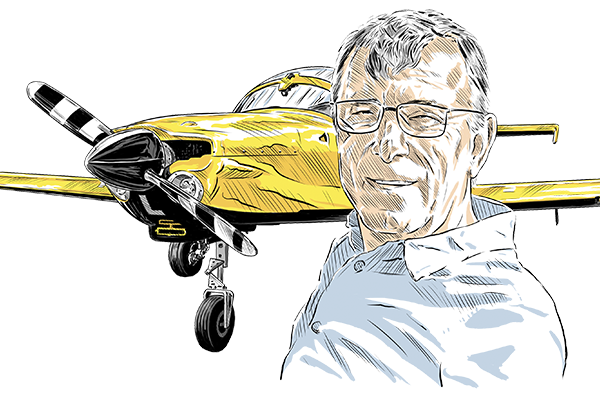CO dangers
Cessna 172R
VH-YXZ
Parafield, Australia
Injuries: None
The crew of a Cessna 172R aircraft was conducting aerial shark patrols. About two hours into the flight, the crew started to experience symptoms typically associated with carbon monoxide (CO) poisoning, and observed discolouration on the disposable CO chemical spot detector. The pilot notified air traffic control, who offered the pilot a landing at Adelaide Airport.
The pilot initially agreed, but as the crew’s symptoms resulted in confusion about the runways at Adelaide Airport, they subsequently decided to fly to Parafield, due to their familiarity with that airport.
The aircraft landed safely and the three crew were taken to hospital for assessment. Blood tests confirmed all had mildly elevated carboxyhaemoglobin levels.
The ATSB report said, “Carbon monoxide is a colourless and odourless gas, and its presence may not be detected until the physical symptoms and cognitive effects are more developed. Therefore, operators and owners of piston engine aircraft are strongly encouraged to install a CO detector with an active warning to alert pilots to the presence of elevated levels of CO in the cabin. Should any smell or sensation of illness develop, pilots should check their CO detector, ensure cabin heat has been turned off, open all fresh air vents and windows, make prompt decisions to land as soon as possible, and use all available resources for assistance.”
Comment: There is little to add to the ATSB safety message above. The UK CAA is conducting a campaign into the effects of carbon monoxide in aircraft cockpits. Does your aircraft have a CO detector – and do you know what colour it turns when CO is detected?
Strap up!
Cessna 182G
VH-DGF
Tooradin Airfield
Injuries: None
A Cessna 182G, took off from Tooradin Airfield to conduct parachuting operations. The pilot reported that soon after take-off, at about 400ft above the ground, the engine sustained a sudden power loss. After being unable to resolve the problem, the pilot conducted a forced landing in a nearby paddock. During the forced landing, the aircraft collided with trees and a fence, which resulted in substantial damage. There were no injuries.
The ATSB found that the carburettor contained aluminium oxide corrosion deposits which, when loosened, likely blocked fuel flow within the carburettor, resulting in the aircraft engine losing power.
After the engine lost power, the decision by the pilot to conduct a forced landing rather than turn back to the departure runway minimised the risk of loss of control during the forced landing.
The pilot was not wearing an upper torso restraint (UTR), but fortunately was not injured on this occasion. However, by not wearing his UTR, he significantly exposed himself to unnecessary injury risk.
Comment: Corrosion was able to form within the carburettor that was not prevented or detected. This occurrence highlights the importance of following the maintenance programme for the aircraft. Particularly in this case, this included draining and flushing the carburettor at its periodic inspection.
When available, upper torso restraints should be worn. While the pilot was uninjured during the accident, a substantial amount of research has shown that wearing an UTR significantly reduces the risk of injury compared to lap belts only.
But full marks to the pilot for the correct decision to land straight ahead!
Mid-air drone collision
Cessna 172
C-GKWL
Buttonville Airport, Ontario
Injuries: None
A DJI Matrice 210 remotely piloted aircraft system (RPAS), operated by the York Regional Police, collided with a Cessna 172, operated by Canadian Flyers International, a flight school. The Cessna was on final approach to Runway 15 at Buttonville Airport with an instructor and a student pilot on board. The collision occurred along the approach path for Runway 15.
There was minor damage to the propeller of the Cessna, and the left-hand side of the lower nose cowling was significantly deformed. The Cessna landed without incident. There were no injuries to the pilots or to persons on the ground. The RPAS was destroyed.
Comment: RPAS – drones – are with us to stay. There may be rules and regulations that ban them from the vicinity of airports but those won’t stop them being flown at the wrong times and places. Keep looking out for them, and report unauthorised use.
Another engine failure
Beechcraft Bonanza A36
ZS-KAJ
Grand Central Aerodrome, South Africa
Injuries: None
The pilot and five passengers onboard a Beechcraft Bonanza A36 aircraft departed Grand Central Aerodrome (FAGC) on a private flight to Louis Trichardt Aerodrome (FALO). The take-off and cruise phases were uneventful. The pilot reported that upon turning final approach to FALO and after being cleared for landing by the air traffic control (ATC), the aircraft engine lost power and went into idle.
The pilot tried to troubleshoot the problem, but the throttle was stuck on full power, and there was no power in the engine. The pilot glided the aircraft as he was flying above the trees but the main gear made contact. The pilot managed to keep the aircraft just above stall speed. However, as the aircraft glided above the last tall tree, the right wing hit the treetop and the aircraft turned 45° to the right (of its path). It impacted the ground with the left side of the main wheel which caused it to collapse. The aircraft spun around a few times before coming to a stop facing the direction from which it had approached.
The pilot and the passengers did not sustain any injuries. The aircraft was substantially damaged.
The investigation revealed that the engine lost power and went into idle because of the separation of the throttle control cable and the fuel control arm. This was a result of the bolt connecting the fuel throttle rod end to the fuel control unit arm separating from the nut. The nut, bolt and pin were never located.
Comment: This accident has similarities to the Boeing 777 accident at Heathrow some years ago, in which a lack of power at a critical time of flight almost caused tragedy. The pilot of this Bonanza appears to have done an excellent job of making a survivable landing after losing power at a very awkward time. A controlled landing with some airspeed is generally far better than losing control of the aircraft with insufficient speed, as this incident demonstrates.





